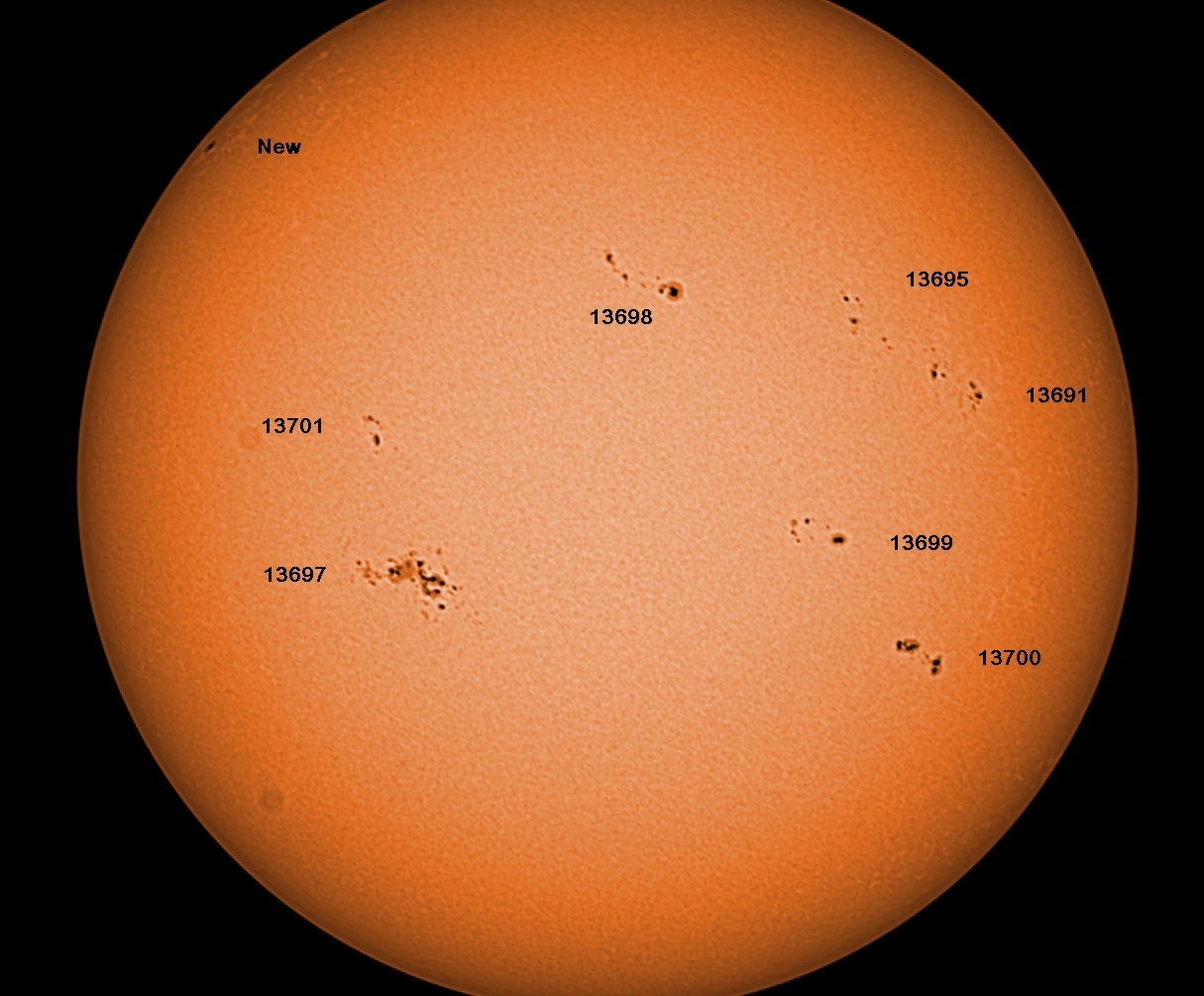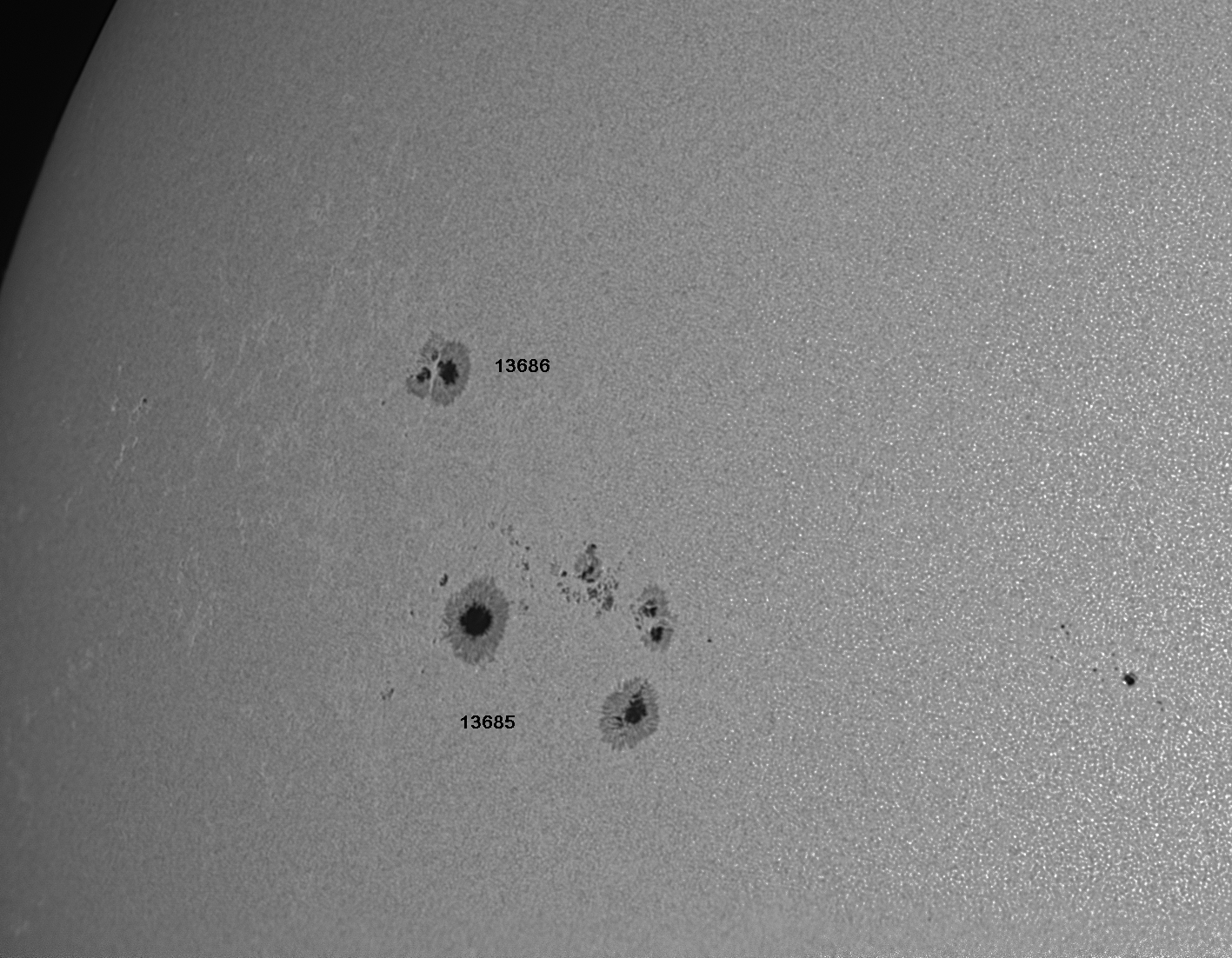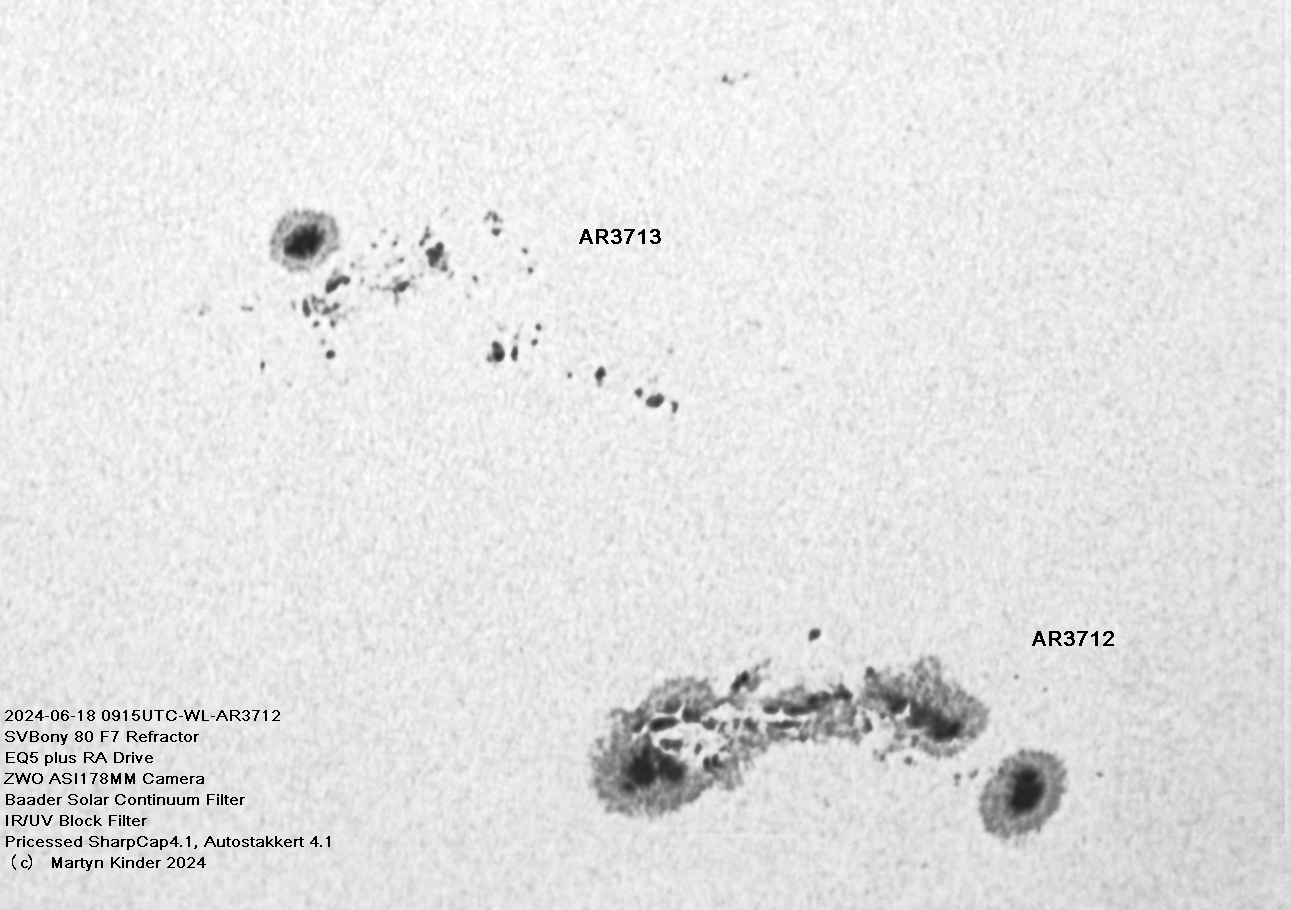Latest Posts
Sun 20240620
Seeing was not too bad this morning. Not brilliant and this is demonstrated by a certain amount of fuzziness in some of the images.
The higher magnification images were achieved with the standard setup but with and additional Baader Modular Barlow lens.

Fairly pleased with this. It appears as good as the Spaceweather image for the same day but shows the boundary of the Active Regions much better. One of the benefits of avoiding false colourisation/ AR 3719 and AR3720 out on the Eastern Limb. Good granulation visible as well
.
AR 3713 and AR 3712. Two complex groups traversing the photosphere. West is to the right which in astronomical convention, points to the earths western horizon. Active regions always show up more clearly on the limb of the sun..

AAR3716. Not looking quite as good when imaged through the Baader barlow lens. Nothing wrong with the Baader, it is is simply the movement of the earths atmosphere causing the photons to wander.. AR3716 is in the northern hemisphere, just above AR3713.

Finally, AR3713. The shape of the umbra (the black bit, it is surrounded by a grey penumbra) in the top right hand spot is very unusual. A very fragmented and disparate/complex group.
Sun - 20240602
Seeing was quite good this morning with a 90% blue sky and good clarity.
My sunspot count went well so I decided to do a bit of imaging.
I was particularly interested in AR 13697, which was previously AR 13664 and responsible for the multiple X and M flares and the Aurora from just over 2 weeks ago. Described in some quarters as 'the Beast'. This is a large sunspot group, approximately 20 degrees in width and has been very active. Although not quite as dynamic (so far) this time around it is still crackling with flares.
Equipment used was:
White Light:
- SVBONY 80mm F7 Refractor
- EQ5 mount with RA drive (not particularly well polar aligned)
- Baader Modular Barlow lens
- ZWO ASI 137MM Camera with Solar Continuum and IR/UV block filter
Hydrogen Alpha
- Lunt ST60 Telescope
- EQ5 mount as above
- Baader Modular Barlow lens
- ZWO ASI 137MM Camera
Processing:
- SharpCap 4.1
- Autostakkart 4
- Registax 6
- Gimp to colourise the images
- Irfanview to flip and minor cropping.


This images shows the granulation on the photosphere. These are enhanced by using a Solar continuum filter. Granulation is caused by cells of Hydrogen rising and falling as they heat and cool.

This Ha image shows AR 13697, lower left. The dark band is a large filament tracking NW to SE. Other filaments around 13697 are also quite clear, the hoop is certainly an interesting shape.

Ha imaging captures detail in the chromosphere. This can be considered to be the 'atmosphere' of the sun and extends outward transitioning and increasing in temperature through to the extremities of the Solar Corona. The detail that can be observed in the chromosphere is remarkable even with a small 60mm objective telescope.
Sun - 20240519
The seeing was particularly good this morning and here are a couple of images in White Light.
The breakthrough for my Solar images was the stacking of the Baader Solar Continuum Filter with the SVBONY IR/UV Block filter. Combined, they have provided a level of resolution which I did not think would be possible with such a small telescope.
White Light:
- SVBONY 80 F7 Refractor
- EQ5 Mount driven in RA
- Baader Modular Barlow
- ZWO ASI 137MM Camera with Solar Continuum and IR/UV Block Filters
Processing:
- SharpCap 4.1
- Autostakkart 4
- Registax 6
- IrfanView for cropping and image flipping


Sun - 20240618
Seeing hasn't been too good in the past 3 or 4 weeks. I thought a holiday trip to Cromer on the NE coast of Norfolk for a week may produce better seeing but I was mistaken.
However, it was good to watch AR3712 develop, a very complex sunspot group, very unlike AR3713 above which is more typical of large sunspot group.
This is a White Light Image of the photosphere, using a solar continuum filter (green) to enhance contrast. Compare the quality with the WL images on 20240519

500 frames with the best 30% selected produced a very iffy image - even after post capture processing.
Page 1 of 2
